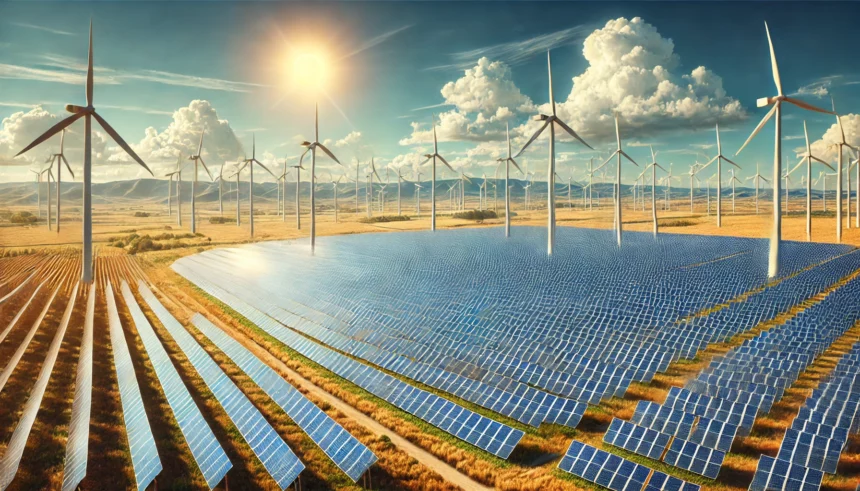Renewable energy is making significant strides in the US. Solar and wind power now make up over 20% of the country’s total electrical generating capacity. This remarkable achievement highlights the growing role of renewable sources in our energy landscape.
Key Highlights:
- Solar and Wind Leading the Charge: Solar and wind together now account for more than one-fifth of the total US electrical generating capacity.
- Renewables on the Rise: The combined capacity of renewable energy sources, including biomass, geothermal, hydropower, solar, and wind, is now nearly 30% of the total.
Detailed Insights
Impressive Growth in 2024
- Solar and Wind Installations: From January to May 2024, 10,669 MW of solar and 2,095 MW of wind were added to the grid. This significant increase underscores the accelerating pace of renewable energy adoption.
- Monthly Capacity Additions: In May alone, renewables made up 94.23% of all new generating capacity added. Solar installations, in particular, saw a boom, with more than double the capacity added year-over-year compared to the same period in 2023.
Solar Power Dominance
- Solar’s Unstoppable Growth: For nine consecutive months, from September 2023 to May 2024, solar has been the largest source of new generating capacity. In May, solar installations accounted for nearly 79% of all new capacity added.
- Top Position in New Capacity: Year-to-date, solar energy accounted for 73.91% of all new generation placed into service.
Expanding Renewable Energy Share
- Current Standings: Solar now represents 8.78% of the total available installed utility-scale generating capacity, surpassing hydropower and closing in on nuclear power.
- Future Projections: Between June 2024 and May 2027, an additional 89,852 MW of solar capacity is expected to be added. This figure is nearly four times the forecasted additions for wind, which stands at 23,449 MW.
The Broader Impact
- Renewables vs. Fossil Fuels: While renewable energy sources are on the rise, fossil fuel capacities are projected to shrink. Over the next three years, coal, natural gas, and oil capacities are expected to decrease significantly.
- Renewable Energy Forecast: By 2027, renewables could account for 36.10% of the total available installed utility-scale generating capacity. If small-scale solar installations are included, this share could exceed 40%, potentially surpassing natural gas as the leading energy source.
The Path Forward
The data from the Federal Energy Regulatory Commission (FERC) paints a promising picture for the future of renewable energy in the US. With solar and wind power continuing to grow rapidly, the energy landscape is shifting towards a more sustainable and cleaner future.
Quick Facts:
- Current Solar Capacity: 8.78% of total utility-scale generating capacity.
- Projected Solar Capacity by 2027: 14.65%.
- Renewable Energy’s Share by 2027: 36.10%, with solar and wind making up the majority.
Conclusion
The transition to renewable energy is not just a trend but a significant shift in how the US generates electricity. Solar and wind power are leading this change, marking a crucial milestone in the journey towards a more sustainable future.
















